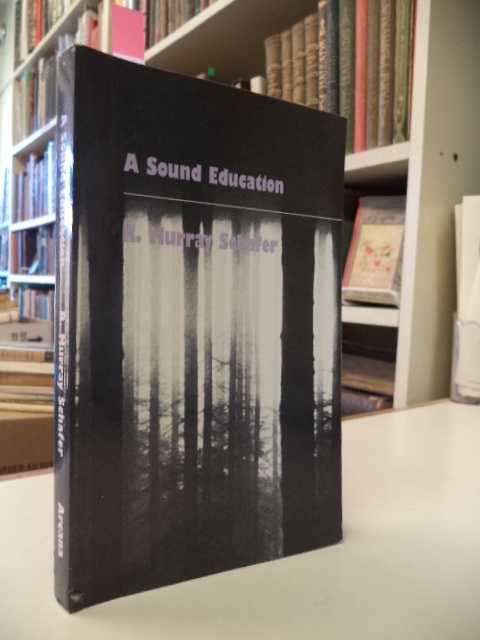
A Sound Education, 100 Exercises in Listening and Sound-Making (1992) R Murray Schafer
This work is a collection of listening exercises designed to open up and diversify an individual’s or group’s auditory aesthetic perceptual capacity and readiness. It exemplifies the linking of practical aesthetic education with critical ecological perspectives and the impetus to transform the world ecologically.
The exercises do not just aim to equip the individual with a differentiated aesthetic listening ability for its own sake, but to base on this a comprehensive approach to bring a beneficial soundscape design into practice:
“We must sensitize the ear to the miraculous world of sound around us. After we have developed some critical acumen, we may go on to larger projects with social implications so that others may be influenced by our experiences. The ultimate aim would be to begin to make conscious design decisions affecting the soundscape about us.” (Schafer 1992, 11)
What all the exercises have in common is that they bring to the listener’s ears those sounds and ways of hearing that lie beyond hearing routines, that is, they bring to the listener’s ears something that they have not yet perceived in this way.
In his exercises, Schafer repeatedly makes it possible to experience that many of the practices and evaluations in listening and sound-making are the result of machinized processes of everyday life to which general listening habits have been conditioned, for example in the experience of time or a qualitative consideration of noise, or through utilitarian approaches.
Schafer’s exercises also convey the close connection between the ecological state of a society and its sonic appearance. The latter is understood as a kind of indicator for the value system of a society; its priorities, deficits and power structures become auditorily conspicuous and constitute its specific soundscape.
In the process, it becomes clear that one’s own aesthetic experiences and evaluations can often deviate from the endorsed or common ones, and the listeners are encouraged to trust their hearing, to represent their deviating experiences and critical evaluations, and to actively bring them into the discourse about the shaping of the environment.
The exercises are of pronounced conceptual stringency, at the same time leading the practitioners into distinctly creative realms, at times almost into the creative-compositional (at least its beginnings). Thus the exercises develop a strong fascination and have by no means the dry character of etudes. They also do not refer the practitioners to their own inadequacy, but to what they have carried within themselves up to now, without being aware of it. In this way, a kind of “aesthetic empowerment” very often succeeds, which at the same time makes sure of the social conditions
The exercises are based on Schafer’s extensive publication “The Tuning of the World” (1977), in which he develops his doctrine of Acoustic Ecology and Soundscape Studies.
Sabine Breitsameter
h_da, Faculty of Media
R. Murray Schafer, A Sound Education, 100 Exercises in Listening and Sound-Making, Arcana Editions, Indian River/Canada 1992.
